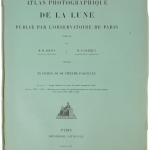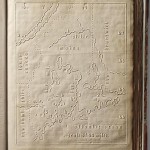A cloud atlas is a visual depiction of various types of clouds accompanied by their classification and nomenclature. Cloud atlases were primarily developed starting in the 19th century and utilised for training weather forecasters and meteorologists.
The 1930’s International Atlas of Clouds and of States of the Sky by the Office National Météorologique based in Paris provides a detailed textual description of different kinds of clouds, their shapes, the occurrences of the clouds, their behaviour, and a description of the disturbances the clouds indicate.
It is complemented by a series of plates where photographs capture various clouds and are paired with drawings that schematize the clouds in the picture and add a graphical description of their movements. A brief text describes the shapes and behaviours of the clouds, sometimes resulting in unintentional poems composed of scientific descriptions in dialogue with the images.
The sun still shows fairly definitely and the cloud is not therefore nimbostratus; but one can no longer distinguish the sun’s outline, and there are no halo phenomena.Between them are interstices where the blue sky appears. Although some parts of the layer are rather heavily shaded, its thickness is medium and fairly uniform.
The clouds are advancing towards the observer, and the sky will become more overcast and thus there will be in time an increase of cloudiness.
The small drawings, while diagrammatic, have an interesting visual quality which also could remind us of short concrete poems or contemporary abstract illustration.
Here follows a selection of illustrated pages from the aforementioned edition.






























Leave a Reply